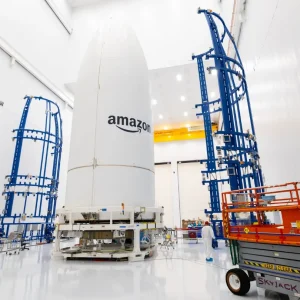Can you give us an introduction to Google Enterprise?
There are 3 pillars to what we do: geospatial, enterprise search and Google Apps, although that has morphed and changed massively over the last 5 or 6 years.
Those businesses on their own are doing very well; it’s amazing how much they’ve grown. We’re number one in mapping and enterprise search. We stood the enterprise search business up on its own about 5 years ago and we’re now number 1; we’re very proud of that.
There isn’t any company that we are now speaking to that isn’t recognising that its digital and enterprise strategies are collapsing into one. That’s because of consumerisation. This is something that has happened over the course of just five years.
The business itself is doing incredibly well. We are perfectly poised to take advantage of the three big trends: cloud, social and mobile.
Mobile is the one that has driven the biggest impact because it is impacted by accelerating the ability of IT to have to respond. With Android and iOS people are just driving this change into the workplace.
But there are questions marks over the suitability of Android for enterprises, in terms of security and management.
Android also pushes updates out, same as Chrome, you’re not having to carry different versions. I think if you look at consumer and business appetite there is a reality that people find a way to support lots of different mobile solutions. I think we’re now very good at getting consumer and enterprise feedback.
Eric Schmidt recently announced we’re shipping 1.5 million Android devices every day and the tablet percentage of those is going up. The Nexus is important to us. We recently crossed 500 million Android activations; it’s going incredibly well. Tablet growth is starting; enterprise adoption is starting.
But why in the enterprise?
For the last three or four versions [of Android] we’ve been working on administrative control – things like multi device management (MDM). I get to spend most of my day speaking to CEOs and CIOs about their strategy and they always say, ‘What am I going to do about RIM? Or Nokia?’. They want to have a platform that is neutral and agnostic.
Where is the next big trend? We don’t know; there could be a brand new form factor that’s about to come out. We will have to respect that and it has to be operating system agnostic. So for us offering MDM was because our customers demanded it. That helped enterprise adoption.
Then you add in things like two-factor authentication and security. That’s really important. Recently we added the ability for an administrator to enforce 2FA at the domain level. We’re giving people the controls they require in the enterprise environment to match their internal security policies.
So it’s a combination of general momentum and Google working really hard on enterprise-grade controls.
Where does Google’s social capability come into all this?
On top of the three pillars I mentioned earlier I often add in devices and social. But I think social will very quickly just become an inherent part of collaboration; I don’t see it as a standalone destination application. It’s been woven into the very fabric of how we want to work and something we identified two years ago – we decided we wanted to build social graphing and social signals and capabilities into all of our products.
So specifically where does Google+ fit in that strategy?
You can go to Google+ as a destination app and do everything you’d expect, and that will continue. We are investing massively [in Google+] as it’s one of our Big Bets.
What’s different about this approach to Wave, Buzz or any of the other attempts Google has made?
We’ve learned from those products. Larry [Page, Google CEO] talks about putting more wood behind fewer arrows and I think there is a perception that we just close lots of products down. But what we do is take things from our process of launching and iterating products like those and weave that into the other products, like Google+ and Docs.
I think there is a genuine demand from people who have looked at enterprise social networking and think that there are a lot of off-the-shelf applications. My sense is that people want to see it more as a platform that works across all the products we have.
I don’t want to have to go somewhere to interact with a group of people. If I’m in Gmail I want to be able to very quickly fire up a Hangout and I can do that; I don’t want to have to go to WebEx and fire that up.
Our investment in Google+ for enterprises has resulted in things such as restricted posts, integration with Docs and so on. That’s important for us. We will be looking to enhance the Google+ mobile experience.
But what about shifting to cloud computing; that’s a big step for many businesses.
There are the technical benefits that we have talked about for years – 30% – 50% operational cost savings, and that is still the base of the business case. The next level up is the business itself, changing the way it works. There are things you can do in the cloud that you simply cannot do on-premise. Have you ever tried email translation on-premise? It’s virtually impossible. Google can do automatic translation into 56 languages; that’s changing the way people work and interact.
Every company has been suffering from financial duress for five years now; there is only so much cost cutting you can do. You get to a point where you’re running on a shoestring and the only way you can really change that is to become more competitive and you do that by being more innovative and collaborative.
We’re trough that breakpoint and people now want to change their corporate culture.
And do you believe that is the main differentiator between Google and Microsoft, for example?
It’s not for me to comment on Microsoft or any of our competitors. We’ve never said that within Google Apps we will bring out an Office like-for-like replacement.
But people want to change. I think the time for personal productivity – going to the office, filling in your spreadsheets and sending them to someone else – is going. There was a standard, monolithic build; SAP in the background, Office and IE on the desktop and BlackBerry. That’s changing and I think the speed of that change has caught IT departments by surprise.
That plays nicely into our hands. I think where we will win, and where we are winning, is when it comes to the three main benefits: business benefits, technical benefits and cultural transformation. That’s how you change an entire company.






